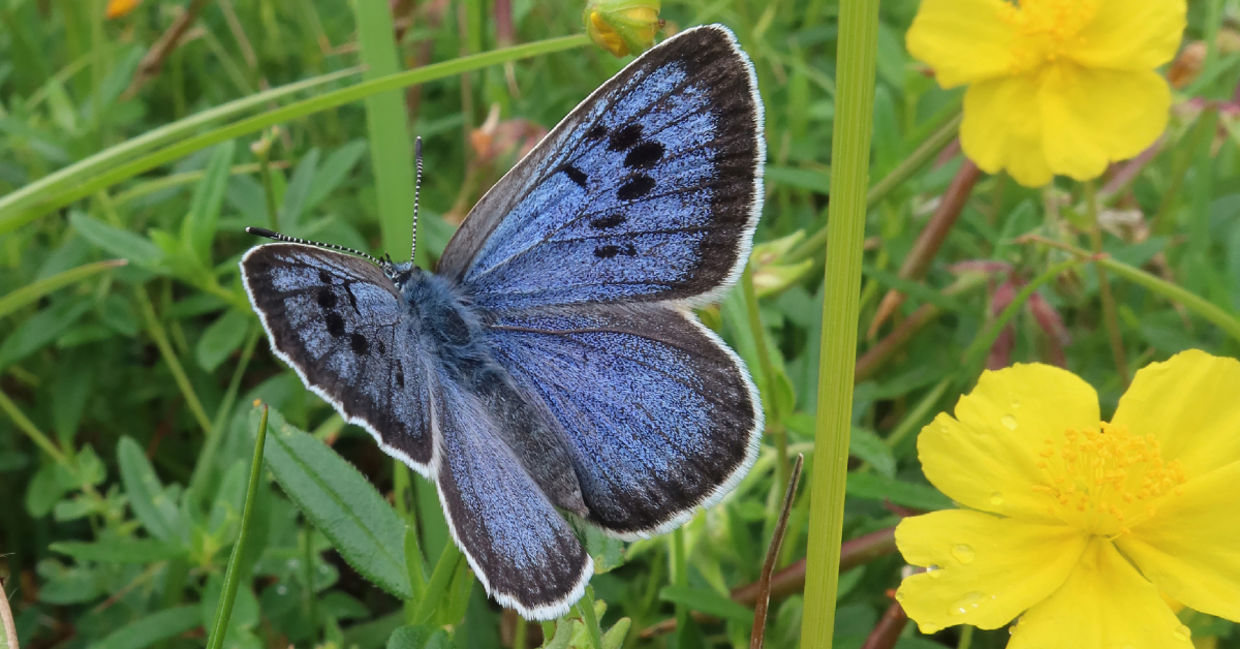
Photo by David Simcox.
The large blue butterfly is fluttering across fields of wild thyme in record numbers this year. Thanks to a successful conservation effort led by the Royal Entomological Society, there are more large blue flitting about wild meadows in southwest England than anywhere else in the world!
In 1979, the large blue butterfly was declared extinct in the UK, according to the BBC. Ecologists and researchers decided to reintroduce the butterfly in 1983 by bringing caterpillars from Sweden but their plan took years to work. They had to learn about the large blue butterfly’s specific habitat needs and then restore the landscape to suit them.
“I didn't have a grey hair on my head when I started. Now it's all grey,” research ecologist David Simcox told BBC News. After 10 years, his team counted just 10,000 eggs, yet conservationists tallied 750,000 eggs in the summer of 2022, resulting in 20,000 large blues hatching.
Restoring wild meadows in the UK
The secret was restoring the environment into wild meadow, complete with thyme flowers and grub-filled nests of a specific red ant where the large blue caterpillars feed until they become pupae.
View this post on Instagram
Man-made changes to the countryside were responsible for the butterfly’s extinction in the first place, according to a press release from the Royal Entomological Society. To make amends, experts converted 12 areas of arable land, railway constructions, and failed coniferous plantations back into meadows.
While the meadows were in full bloom this summer, ‘word went out’ to other rare insects and animals! The UK’s second most endangered bumblebee, the Shrill carder bee, made an appearance, along with the rock-rose pot beetle, which had only been seen in five other places in the UK. Eight other endangered butterflies were also observed.
Rare plants also reappeared, including the scarcely seen Pasqueflower and Cut-leaved self-heal. Some 132 species of orchid are also now flourishing.
“This project has been a great example of what sensitive habitat restoration can achieve, resulting in record new populations of the Large blue butterfly as well as the re-emergence of other rare insect and plant species,” Nikki Jeffery from the Prince of Wales’s Charitable Fund said in the press release.
Reversing the decline of threatened species
This restoration program took many years and myriad minds to meet success. “The unprecedented success of this project is testimony to what large-scale collaboration between conservationists, scientists and volunteers can achieve,” Professor Jeremy Thomas said in the press release.
The wonderful news is that the decline of threatened species can be reversed. The group plans to rewild three areas in the Cotswold Hills. The hope is that the large blue, along with many other plants, insects, and wildlife will soon return to their former glory.
YOU MIGHT ALSO LIKE:
Found in Florida: A Blue Bee Thought to be Extinct!
Making a Beeline for Bricks!
Rewilding Nature, a Unique UK Conservation Project







